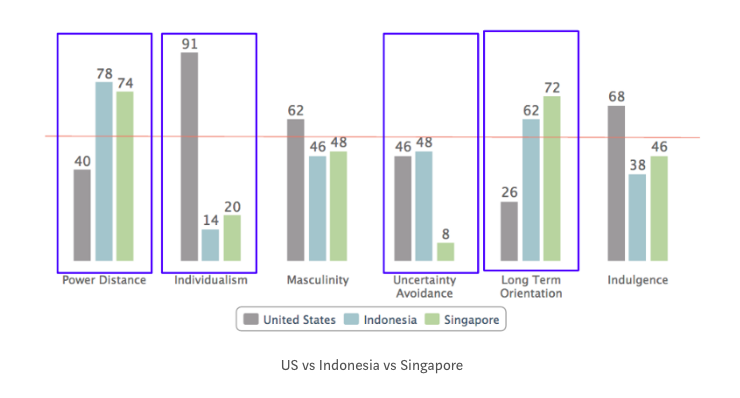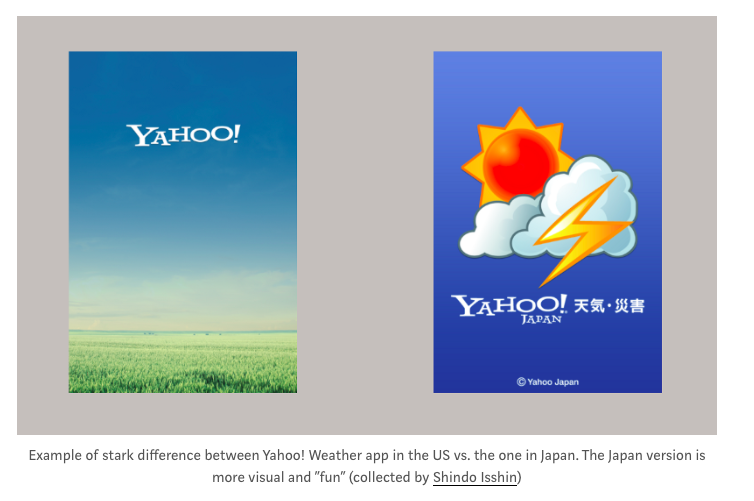If Spotify were a Singaporean radio station, it would be the 3rd largest by weekly reach. As TNS reports, at least 2 out of 5 Singaporeans with internet connection are streaming on Spotify which is more music streaming in this market than ever before. Recently, every global brand or business is looking to enter the Asian markets and gauging its potential for them.

As a business, you are always anticipating to experiment in local areas and inflate in emerging markets. Nowadays, companies are looking at Asia with such hawk’s eyes and targeting to bloom their business. This can be attributed to two simple factors, technological development bringing the world closer and high population levels in countries like China and India meaning the high amount of clientele. With many countries developing, like India and many already developed like, China and Japan, acquiring new customers is the goal of international brands. Once the idea to pierce through the local setups is conceptualized, the next thing you need is a medium to reach out and build a connection in the target country. A website / digital footprint can serve for this purpose and broaden the horizon.
As an entrepreneur, when you venture and try launching in a new market, there are many determining questions that can bear consequences on results. Let’s try to answer them with fitting solutions!
Decoding Asian Market
Asia is a legion of culture with a long history. According to Geert Hofstede, there are 6 cultural dimensions which are stemmed from the work that he mentions from his study on how cultures influence values in the workplace in 1991. They are Power Distance (PDI), Individualism (IDV), Masculine (MAS), Uncertainty Avoidance (UAI), Long Term Orientation (LTO), and Indulgence (IND). This framework is used to understand more about countries’ culture.
US vs SEA: This graphical illustration shows 6 cultural dimension scores for US, Singapore, and Indonesia.

Power distance: The degree in which the society accepts a hierarchical order (high power distance) vs a flat hierarchy
Individualism: In individualistic societies, people take care of themselves while in collectivistic societies people take care of members of their groups
Masculinity: Masculine societies(high masculine scores) have a preference for achievement and assertiveness, while feminine societies (low masculine score) have a preference for cooperation and quality of life.
Factors to consider when catering to Asian Markets
Let’s go through the parameters to be kept in check!
Visual Design
Language
With an intense heritage full of visuals and artifacts, Asia has a strong aesthetic for designs where colors play a crucial role and are signifiers of meanings. The legacy in Asian cultures is said to be passed on with either verbal narratives or visual artifacts which have been traced back in time. Thus, modern-day users of digital apps and websites expect the same over designs and presentations of data. You must have noticed bright clashing colors and flashing banners on Japanese sites which look confusing to the western eye, but actually, allow locals to become comfortable with processing a lot of information in a short period of time and space.
Visual Design in Digital
Symbolisation is a factor observed across the globe, but many times Asian cultures relate symbols, auspicious events or emblematic meanings with sentimental values. E.g, Expedia Japan incorporated a bear mascot to lure a specific culture. However, the tricky part is the difference in the meaning behind it. The “gear” icon might mean settings in the western world, but in China, it could definitely mean “discover”. McDonald’s is another great example as succeeded to build the product in a way to serve the local market needs and the service offered remained the same. Thus, logos, colors, and icons play a crucial role and should be a parameter when considering to build your website for the Asian audience.
Technological Adjustments
Symbolism
It is often seen that Asian sites look like all the content is cramped on one page or screen with tiny low-quality images and anything not visible is considered ‘‘missing’. This reasons the ‘’grid’’ menu option in Asian phones and websites as they wish to see everything at a glance. In both China and Japan, users tend to be comfortable with cluttered, high information density apps and sites,” says Alan Stafford, solution architect at Frog (a design agency). Thus, here are a few action points on how to design place the content:
- Keep the most important action items in one area or in one fold.
- Use relevant pictures and iconography to convey quick meanings
- Sample test your designs with local users to validate your designs or ideas and improvise accordingly.

Web Fonts
Non-Latin languages(Chinese and Japanese) have limited web fonts as they require thousands of differently designed characters which costs time and extra expense. Above that, the Japanese language doesn’t have capital letters or the option of italics which limits opportunities for playing with the text in any visual form. This also makes it difficult for designers to create any hierarchical contrasts or distinction between contents if organizing information in a decorative graphical text. These reasons tend to make them settle for the usage of images, banners and plain text to display non-standard typefaces.
Right Pricing
The most important business strategy when launching a product/service is budget pricing according to the targeted audience and starting from a lower point. This was the best practice Spotify adopted when working in Asia, where the company offered different pricing based on the average incomes of its various Asian markets: Spotify Premium currently runs for USD $7.10 per month in Singapore, $6.20 in Hong Kong, around $5 for Taiwan, and less than $4 in the Philippines and Indonesia. All these are adjusted from the $10 rate for listeners in the U.S.
Right channels
Facebook and Twitter are banned in China, while Youtube was banned in Pakistan until a few years ago. Brands and organizations are now using the power of social media platforms to announce the launch of new products and services. Thus, from a business perspective, concentrate your market research in reaching potential clients via available and impactful mediums such as an event, a newspaper listing, or blog post. For countries like China, offline channels like organizing pre-launch events, surveys, giving out free sample can work in favor as almost all global platforms are shunned digitally and they have a different web world.
Diverse Language
Europe and Asia are the two continents where an official language of a country is often the native language. With more than 2,000 different documented languages in Asia alone, it can get troublesome to cater to all. As most websites are designed by English speakers or western corporations the majority of resources are also in English and that leads to a delay in new technologies and trends being adopted by the non-English speakers.
Asian languages
Though different kinds of browser options are available today, not all are capable of handling Asian language characters. Also, there are limited font choices that may challenge developers in the development process and change the whole context of your brand identity. It is advised to avoid using CSS or EOT embedded fonts which can slow the site, especially on mobile. You can use the common UTF-8 encoded fonts like SimSun for Chinese or Mincho for Japanese which are supported by all main browsers.
Writing forms
While organizing an online survey, forms are the best way to capture data of the local market. However, the style of writing names is different in Asia as the first name or given name doesn’t necessarily come first. Further complicating it, there are nicknames given at birth that are used for informal communications in Thai culture. Thus, it is a wise call to build a flexible form in the data capture in case the end-user has no data for a particular field. You can consider these action points:
- The different languages affect UI interfaces, e.g. search terminology & results, keyboard, and voice recognition.
- Typing can be a bit difficult and Asian people might use voice assistants more prominently
- Languages in Asia like Japanese and Chinese are “logographic”, which means they are packed into one single character where one character can basically be one or two words.
It’s a Wrap
Once all these factors are in check, testing is the next important step to ensure the adaptability under local conditions. Running a pilot project or testing with a closed group of users is advisable along with testing the site internally across a range of devices and browsers. What might work in the western world might not fit in for Asia and it’s vice versa. Thus, there’s no one-size-fits-all approach that can be harnessed for website localization and languages adapting is a part of it.
Subscribe
Related Blogs
Why should you prioritize lean digital in your company?

We are living in an era where the change and innovation rate is just so high. If you want your organization to reach new…
How to measure your open source program’s success?

Along with active participation, it is very important to look after the ROI of open-source projects, programs, and…
Understanding the significance of participating in open-source communities

Do you think contributing to the open source community can be difficult? I don’t think so. Do you have to be employed by a…



